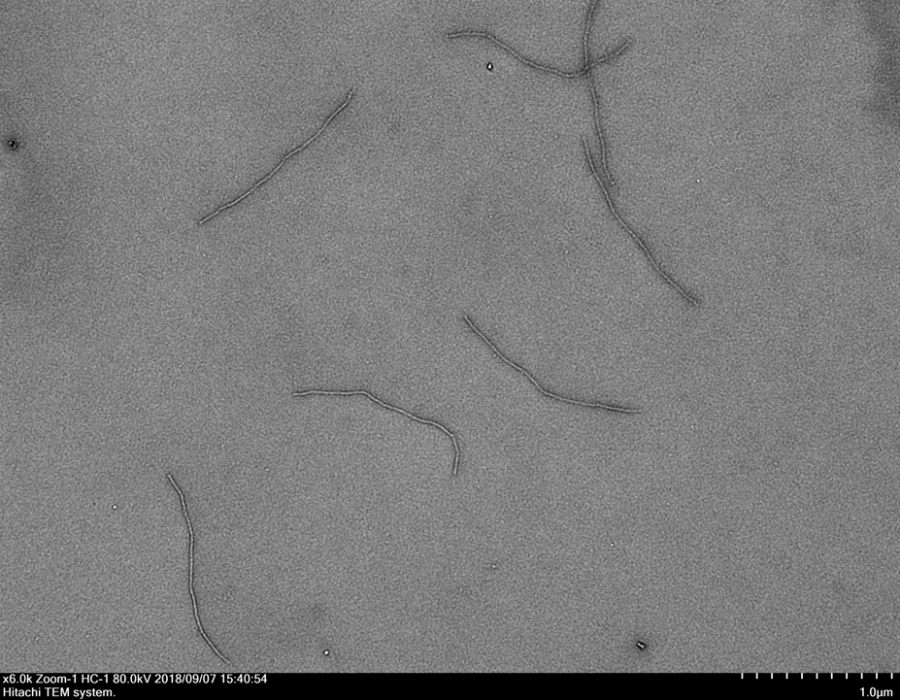
The research team plans to use the electrical properties of DNA to store data
Over the summer, Dr. Josh Hihath, a professor of electrical engineering at UC Davis, won a grant from the National Science Foundation to research whether DNA molecules could be used to store computer information.
Hihath, alongside his research partners Anant Anatram at The University of Washington and Yonggang Ke at Emory University, are planning to use the grant to create a read-only memory that is based upon DNA molecules. Unlike the human genome, where data is stored based on the sequence of nucleic acids in the double helix, the research team is attempting to use the electrical properties of DNA strands to store information.
“What we proposed is instead of using the sequence to store the information, use the sequence to change the resistance and then use the resistance to store information,” Hihath said.
Hihath has used lab instruments to identify the resistance of DNA molecules for several years now. He applies a voltage to DNA molecules and measures the electrical resistance, or the difficulty of running an electric current through the molecule.
“We’ve shown that changing the conformation changes the resistance, so if we can control the structure of DNA, then we can actually get different resistance properties,” Hihath said.
The research group proposed that the discrepancy between the resistance of different DNA molecules can be used to store information.
“We found that one sequence actually has a different resistance from this other one, and so as long as you can have two that are different by a factor of 10 or a factor of 100 that’s good enough to define one as a 1 and the other as a 0,” Hihath said.
Once you can define something as a one or a zero you can store a bit, which is the smallest unit of data possible, and if they can store many bits they will have created a memory solution.
The research team is currently able to read the resistance of individual DNA molecules with laboratory-scale instruments. Now, with the grant money, the team wants to create a device capable of reading many DNA molecules at the nano-scale. To help accomplish this, they have proposed making nanoscopic “wires” which would pass a voltage through the DNA molecules and determine if the molecules is storing a one or a zero. Here is the crux of the project: can the team create nanoscopic wires to help them read data stored in DNA molecules with different electric resistances?
To solve this challenge, the team proposed using DNA to not only store the individual bits of information, but also to build the nanoscopic wires which would help read that information. In order to physically create the wires, the team is using long complex DNA shapes called DNA origami. It turns out that people have done a lot of research on these structures, according to Hihath.
“What’s less understood is how to manipulate the electrical properties to be able to turn that mechanical scaffold into something that’s electrically functional,” Hihath said.
This is crucial to the research because the DNA wires must be able to conduct electricity to be useful. The researchers are exploring multiple approaches to creating these wires. One possible solution, according to UC Davis Ph.D. student Jonathan Marrs who is working on the project, is that the DNA origami structure could conduct the electricity itself. Alternatively, the DNA origami structure could be used as frame to allow a more conductive material to grow alongside it that would conduct electricity.
“You could imagine that maybe you could start to nucleate some gold or some metal that kind of grows along the DNA,” Marrs said.
To arrive at a solution, the team needs to better understand the charge transport properties of different DNA origami chains i.e. whether they will conduct electricity. Each researcher has a specific role in this aspect of the research. Ke is focused on the DNA origami structures, Anantram is creating computer models to predict and improve the transport behaviors of the origami strands and Hihath is experimentally testing and optimizing different possible solutions. If the researchers succeed in creating conductive DNA origami wires or solving the problem another way, they might be able to create the memory device they are after.
Such a device would be a major development in computing.
“With DNA nano-technology we might be able to self-assemble a denser array than what current semi-conductor technology affords,” Anantram said.
The device would be novel because it would be constructed out of very small molecules instead of being “chiseled” out of relatively big materials as current memory solutions are manufactured.
“Rather than spending billions of dollars to build a fabrication facility you could now spend a few dollars for a test tube and some DNA and sort of grow your device in a test tube,” Marrs said.
All of this will only be possible if the researchers can overcome the great challenges they face.
“It’s sort of exciting any time you are working with something new that hasn’t been done before because you don’t know what you are going to find out,” Marrs said. “Maybe it’s a dead end or maybe it’s like oh this is a new transistor. It’s just exciting to think that there is a lot of potential.”
Written by: Peter Smith – science@theaggie.org



